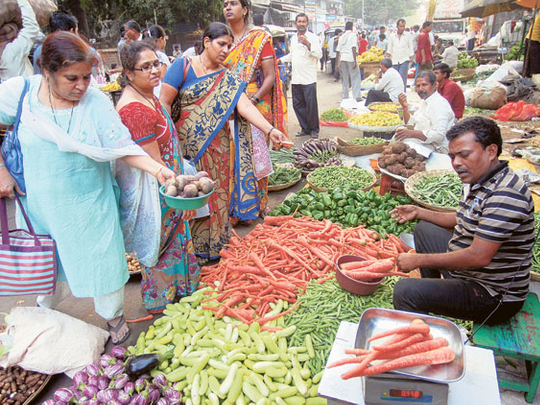
New Delhi/Mumbai: Indian inflation held stubbornly above nine per cent in November, maintaining pressure on the central bank to keep interest rates steady this week, although signs of a rapidly weakening economy mean it is likely to adopt a more dovish tone.
The wholesale price index (WPI), the main inflation gauge, rose 9.11 per cent from a year earlier, slowing from a 9.73 per cent rise in October and above the 9.04 per cent increase forecast in a Reuters poll.
The pull-back from October's pace was largely due to a sharp drop in food inflation, with price pressures in manufacturing and fuel rising as a tumbling rupee pushes up import costs.
"The rapid depreciation of the rupee is going to throw out of the window all the calculations on inflation, given the contribution of imported inflation to manufactured product price inflation," said Rupa Rege Nitsure, chief economist at Bank of Baroda in Mumbai.
The rupee is down 18.4 per cent from its year-high in July and hit a fresh record low yesterday, undermining the central bank's forecast for inflation to drop to seven per cent by March and making its job of shifting to a looser policy of cutting interest rates all the more tricky.
Tight cash conditions
"Even though the RBI will definitely pause on rates [tomorrow], the exact timing from which it would have started easing interest rates has once again turned uncertain due to the tumbling currency," Nitsure said.
Food inflation dropped to 8.54 per cent in November from more than 11 per cent in October, while fuel inflation rose to 15.48 per cent from 14.79 per cent and manufacturing inflation increased marginally, to 7.7 per cent from 7.66 per cent.
"Most of the improvement is because of food," said Rajeev Malik, an economist at CLSA in Singapore.
India's headline inflation has now been above nine per cent for 12 consecutive months despite 13 rate increases since March 2010 that have lifted the repo rate — the policy rate — to a three-year high of 8.5 per cent from 4.75 per cent.
Tight cash conditions in the money market have fuelled speculation that the central bank might lower the cash reserve ratio, the percentage of deposits banks must maintain with the RBI, as early as tomorrow. However, a Reuters poll showed economists don't expect a CRR cut before 2012.
"The RBI is unlikely to jump the gun either on CRR or on the repo rate just yet. I think these are both early next year outcomes. But on Friday what it will do is it will sound a lot more dovish. That in itself is an important change," Malik said.
Indian bond yields and swap rates edged higher after the inflation figure. The 10-year yield rose four basis points to 8.46 per cent, while stocks turned slightly negative before moving higher.
Growth slowdown
While India battles both high inflation combined with a weakening economy, the focus globally has shifted towards supporting growth as the Eurozone debt crisis weighs.
Other central banks, including those in Brazil, China and Indonesia, have started to ease monetary policy.












